medi Winter Sports Range
Winter sports can be pretty hazardous. Fun, yes but not without a certain air of possible disaster – perhaps testament to the endlessly growing business. With cheap flights, package deals and the ever expanding EU, winter sports holidays are now open to just about everyone.
The business is so big in fact that it accounts for ö00m worth of industry in Blighty and a whopping 2.7 billion dollars in the US.[1]
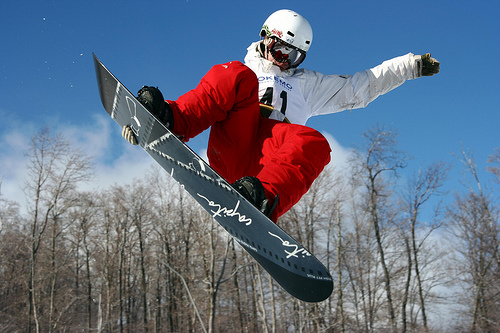
Itֳ by no accident (pun intended) then that Heathrow Airport is constantly and consistently packed with wheelchairs and crutches between the months of November to April as our British gung-ho attitude gets the better of even the best of us. After all, any sport where alcohol is not only allowed, but commonplace is bound to cause havoc for nine to fivers and James Bond fans. And though snowboarding accounts for nearly double the amount of accidents than skiing[2] this by no means represents skiing as a safe haven for adrenaline junkies or drunken stags.
However, though winter sports enthusiasts regularly flirt with the possibility of injury, the risk of serious injury seems to be fairly low Рa reported two injuries per 1000 skier days according to ski-injury.com.[3]
From personal experience then, it seems that the most common injuries are both minor and chronic. From twisted ankles and knee ligament injuries to wrist and thumb sprains. Though large scale acute injuries such as breaks or head injuries are actually fairly rare, helmets and travel insurance are still a must.
medi for sports recovery
Thankfully for all you injury connoisseurs, a whole host of injury specialists have surged onto the market in recent years, fast becoming the best thing to hit winter sports since the carving skis of the 90ֳ.
German sports injury specialists medi, exclusive to PhysioRoom.com, combine the utmost in craftsmanship with an inherent knowledge of Alpine sports to bring you one of the most comprehensive winter sports injury ranges on the market today. They are so revered in fact, that they have recently been named as the official supplier to the Deutscher Skiverband (German National Ski Team).
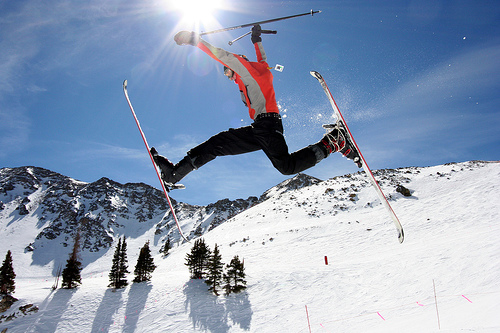
medi Compression
medi pride themselves on intelligent design and research. Their compression fabric is testament to this research and is based on over six decades of previous development. Being designed, sourced and even crafted in Germany, the material is guaranteed to exert the exact precise level of compression on the body at all times. We at PhysioRoom.com are proud to bring you the medi range of sports recovery products that can be used for both winter sports and during warmer climate activities also.
Wrist РManumed Range
When most of us fall, we naturally place our hands on the floor for stabilisation. Itֳ daft really, but hey Рwe all do it. As such, skierֳ thumb has become a common injury during winter sports. The injury is characterised by damage to the Ulnar Collateral Ligament which sits at the base of the thumb[4] and occurs when force is applied to the joint offsetting it away from its base on the hand.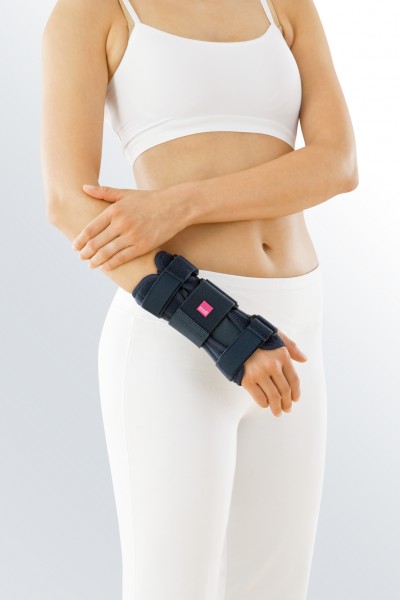
Making up for 10% of all ski injuries and being the most common upper extremity injury in winter sports, skiers thumb is a painful injury that can be highly debilitating if left untreated. Wrist sprains are also commonplace in the world of winter sports due to the impact faced on the joint when falling, especially when ski poles are used. The following braces by medi are designed to offer maximum comfort and stability for the wrist and thumb as you traverse the powdered slopes of the EU:
Manumed Active: The Manumed Active is a lightweight wrist bandage for use following skierֳ thumb and wrists sprain injuries that stabilises the joint and provides a large protective area to the thumb. With a pressure-free moulded edge that is both highly elastic and constriction free, the Manumed Active stabilises joint at the most vulnerable point of the wrist and provides isolated comfort for the thumb. The hand splint is shaded to an optimum size to provide effective support and stabilisation no matter what the size of the hand is.
Manumed T: The Manumed T is a specialist wrist bandage for chronic conditions to the wrist or thumb which are of a more serious nature. The slip-on brace features a specialist construction which allows the orthosis to be fitted with only one hand. An anatomically formed aluminium splint can be adapted to the individualֳ requirements regardless of size. medi Airtex breathing material allows for moisture wicking which creates a high comfort zone around the injured area, meaning that the user can wear the brace for long periods of time without succumbing to overly sweaty conditions and discomfort.
Knee РGenumedi Range
The knee is, perhaps unsurprisingly, the most common source of injury when it comes to winter sports. All that twisting and turning to and from the bar, and on the slopes, causes a massive amount of pressure unto the ACL and MCL ligaments. Coupled with the stress of holding the body, often in a constant partial squat, deceleration and directional changes and it is unsurprising that the joint is responsible for up to 45% of all skiing injuries.[5]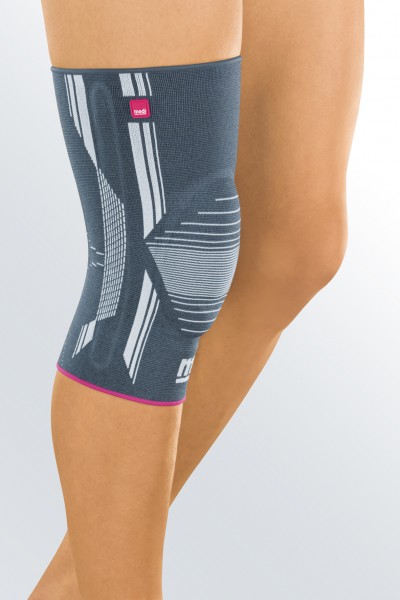
Genumedi: The Genumedi by medi can be worn during impact based sports to prevent or alleviate an injury and during rehabilitation or surgery following a harsh injury to the area. Designed to reduce the stress on the patella (knee cap) during use, the patella ring – soft silicone holster, maintains stability of the joint to prevent it from becoming misplaced or dislocated during use. This stability ensures that the joint is completely protected and encased in a secure shell to maintain optimum compression and comfort.
The Genumedi also contains internal silicone-coated adhesive strips which maintain support on the leg and prevent it from slipping down through repetitive use. The Genumedi features mediֳ superior compression fabric which is based on nearly 60 years of specialist research and design.
Ankle РLevamed Range
Since the introduction of hard-shell ski boots and high tech bindings, ankles have become less of an injury prone area. Back in the 1960ֳ however, when boots were made of soft leather and covered only the lower part of the leg, skiers ankle made up for about 25% of all injuries Рthe largest amount at the time. Hard shell boots, carving skis and overall better technologies – on and off the slopes – have reduced this figure gradually over the years. That doesnִ mean that the condition is completely improbable. Ill-fitting boots and general audacious bravado still account for the ankle being a possible cause of injury on the slopes – from small fractures of the lateral malleolus to snowboarderֳ ankle – a fracture of the lateral talus. 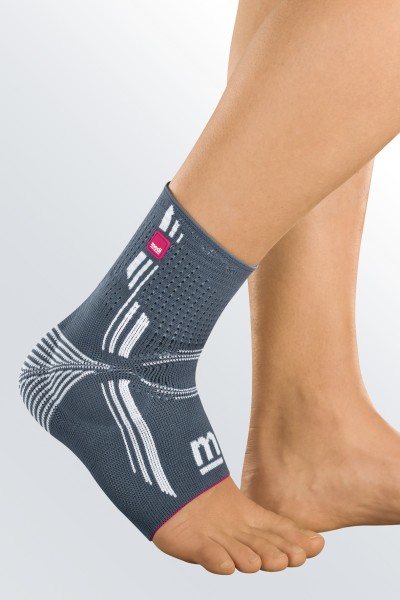 To keep the area protected and to keep you on the slopes, medi have created the Levamed and Achimed products which are designed to help in the prevention of an injury and the protection of the joint during rehabilitation:
To keep the area protected and to keep you on the slopes, medi have created the Levamed and Achimed products which are designed to help in the prevention of an injury and the protection of the joint during rehabilitation:
Levamed: The Levamed by medi is a stabilising ankle joint support which is designed to release stress in post-operative conditions. Pressure-free on all sides, the knitted fabric bond guarantees that the Levamed will sit snugly on the joint making it perfect for support during long days on the slopes. The compression comfort zone is sensitive to the instep area, a common sight of swelling during winter sports though slants at one edge to make slipping over the instep easier than in most joints.
Achimed: As the name probably suggests, the Achimed is designed to support the Achilles tendon during use with specified heel wedges that reduce stress on the tendon during use. Again, a pressure free edge guarantees that the product sits perfectly into the lower leg without cause of irritation and pressure. Two heel wedges holster the Achilles tendon in place and reduce stress on the area which is prone to over use and inflammation.
Author: Toby Cryne
[1] http://www.statista.com/topics/1770/winter-sports/
[2] http://welove2ski.com/ski-safety
[3] http://www.ski-injury.com/intro
[4] https://www.physioroom.com/advice/injuries/body-part/hand-wrist-thumb-sprain
[5] http://www.sportsinjuryclinic.net/sports-specific/skiing-injuries


